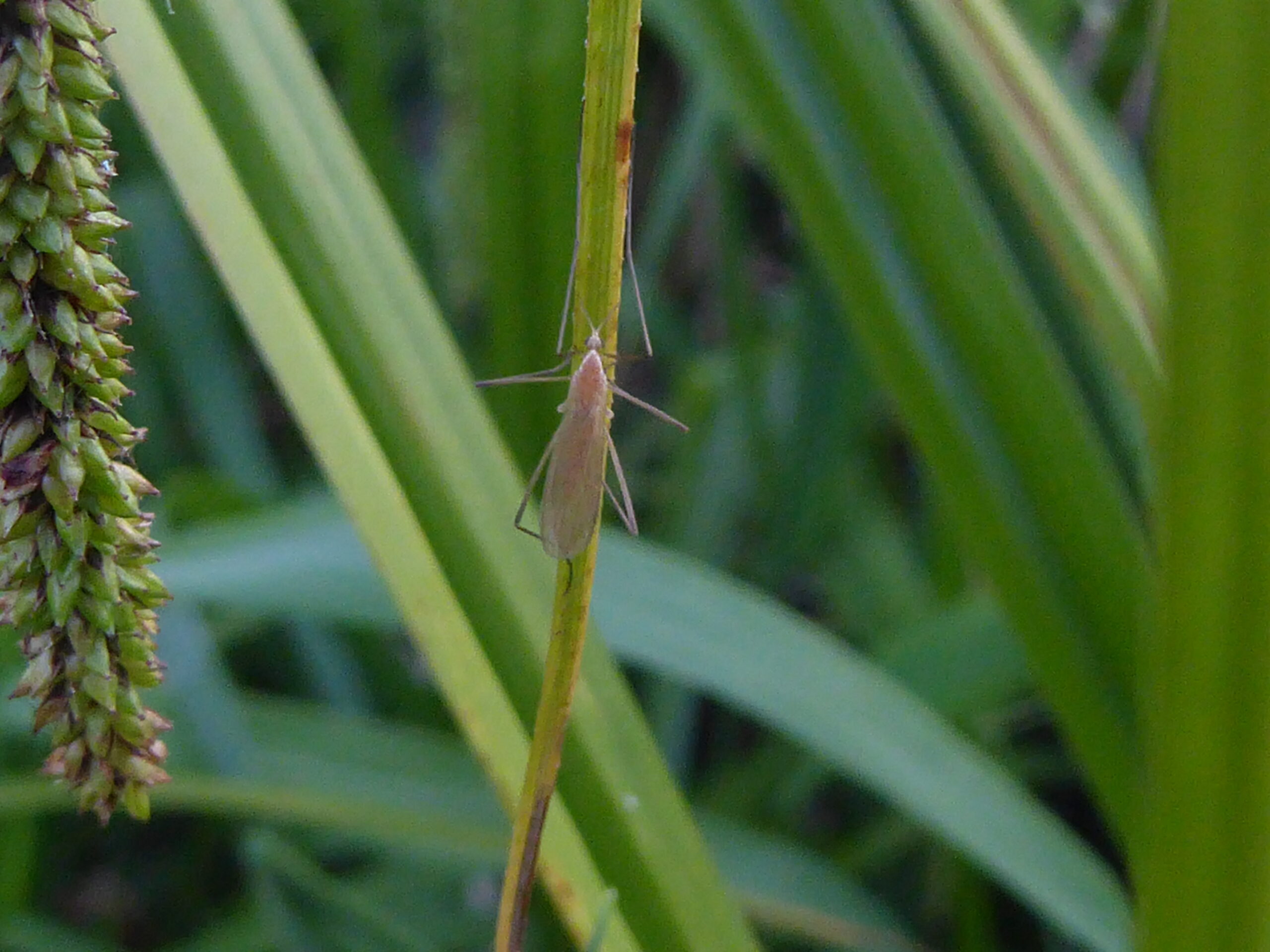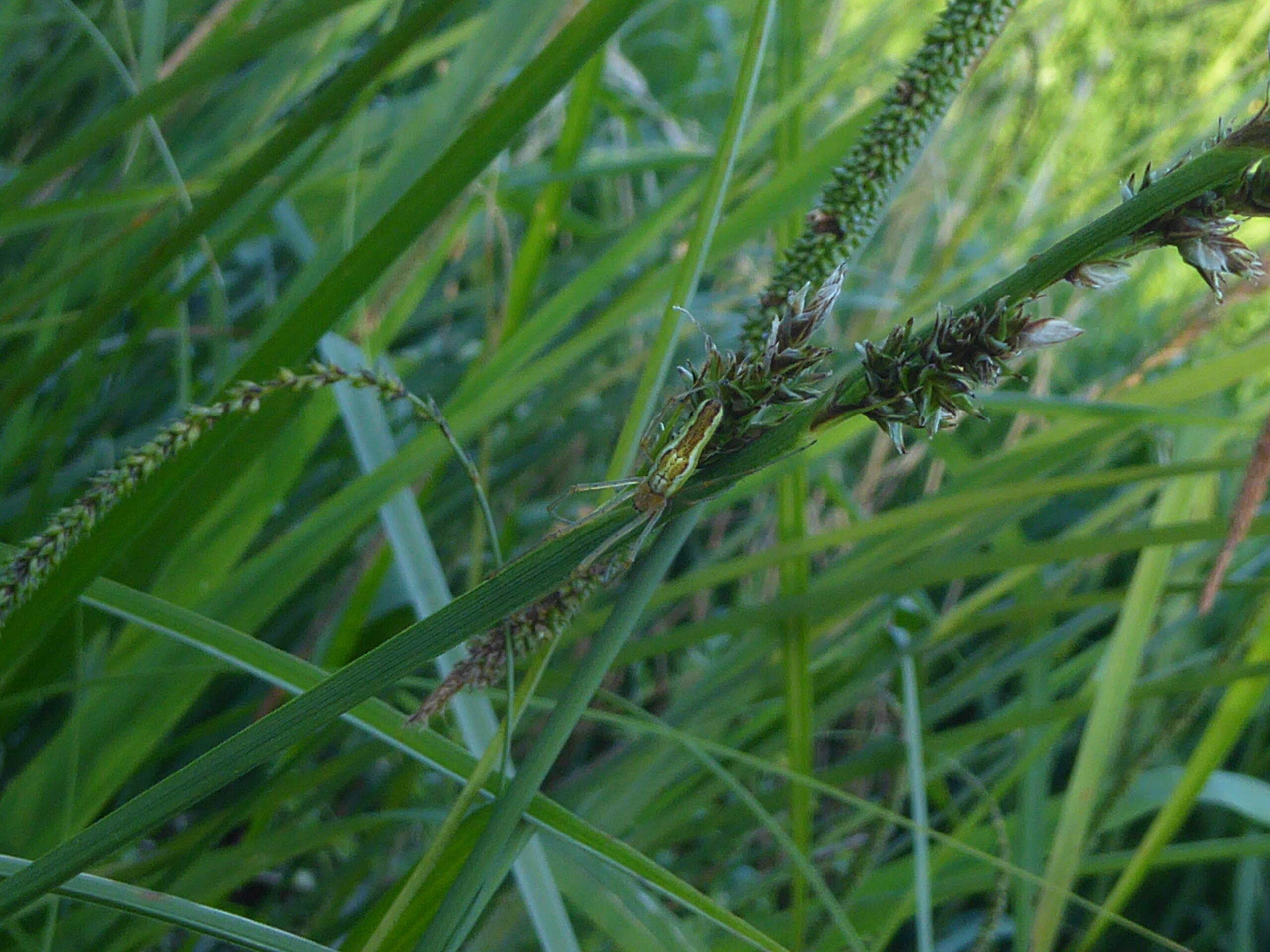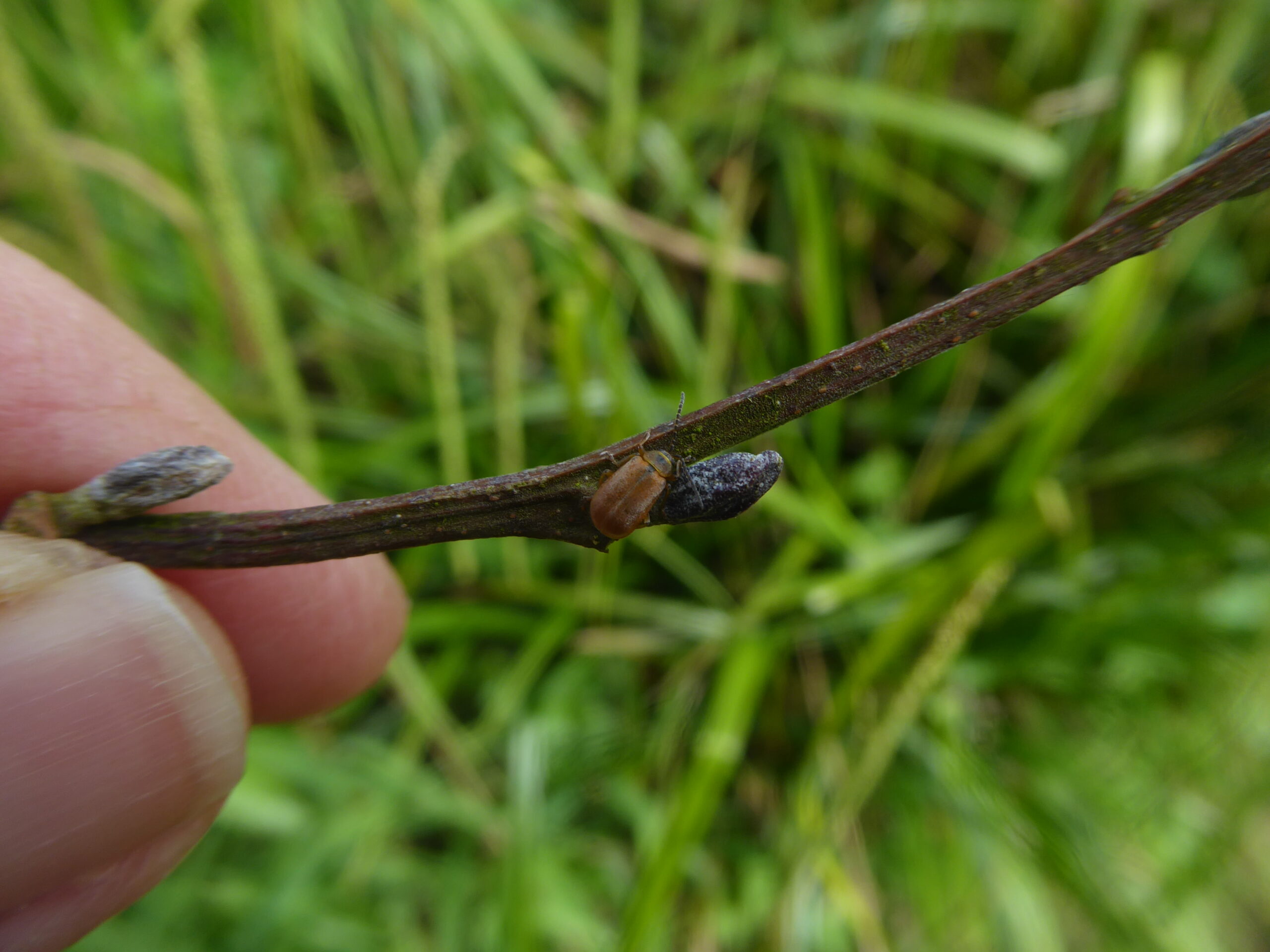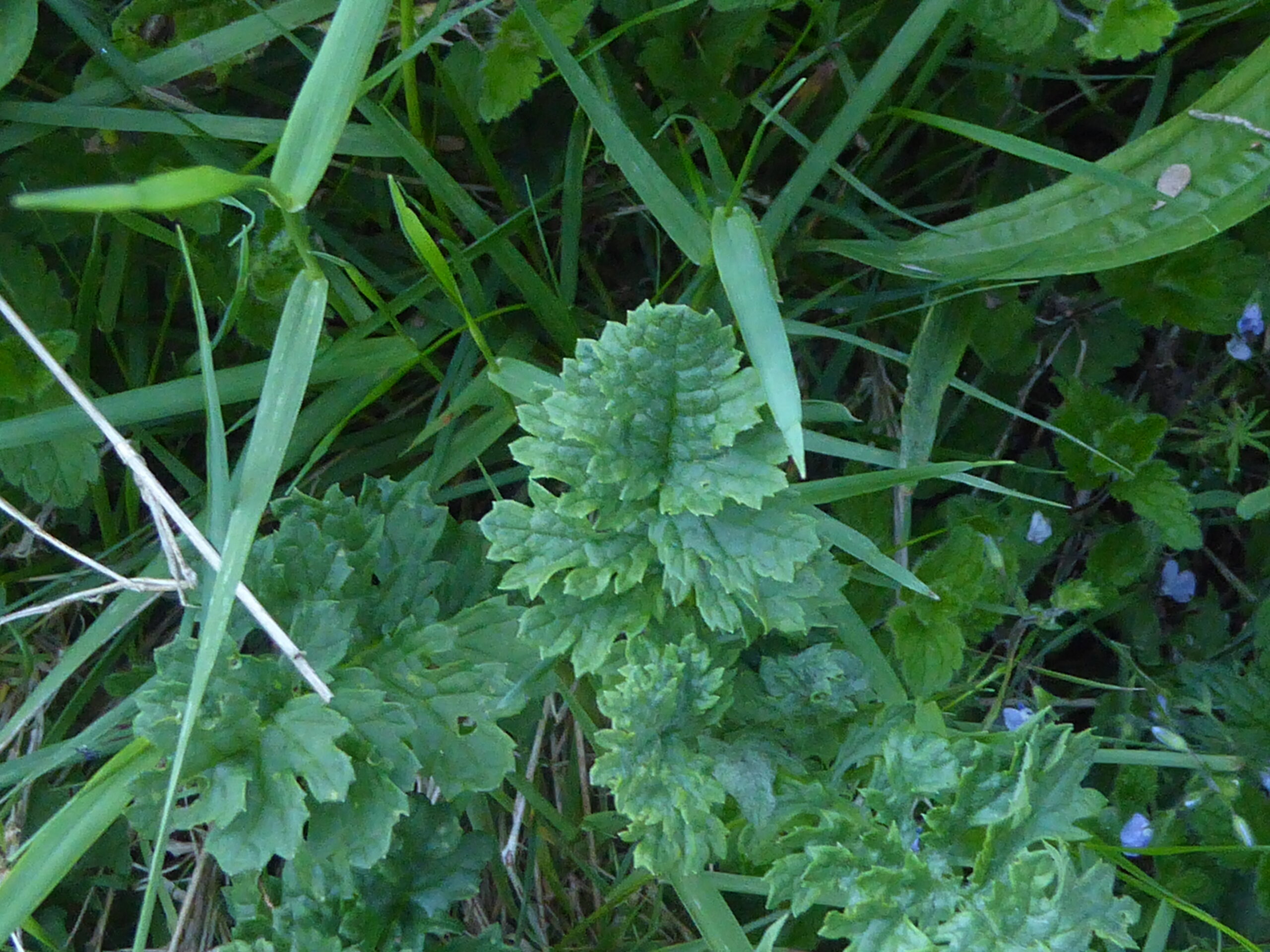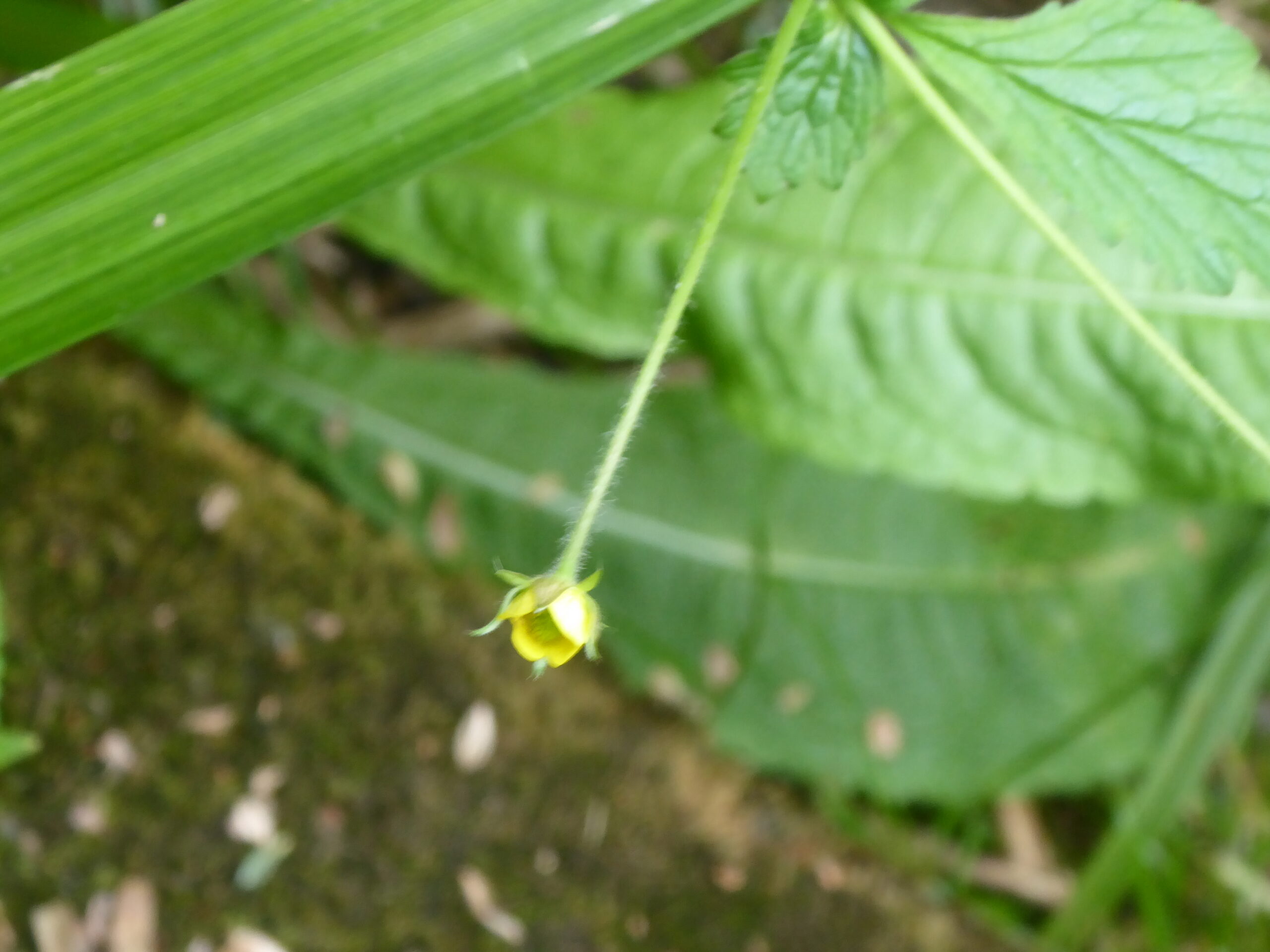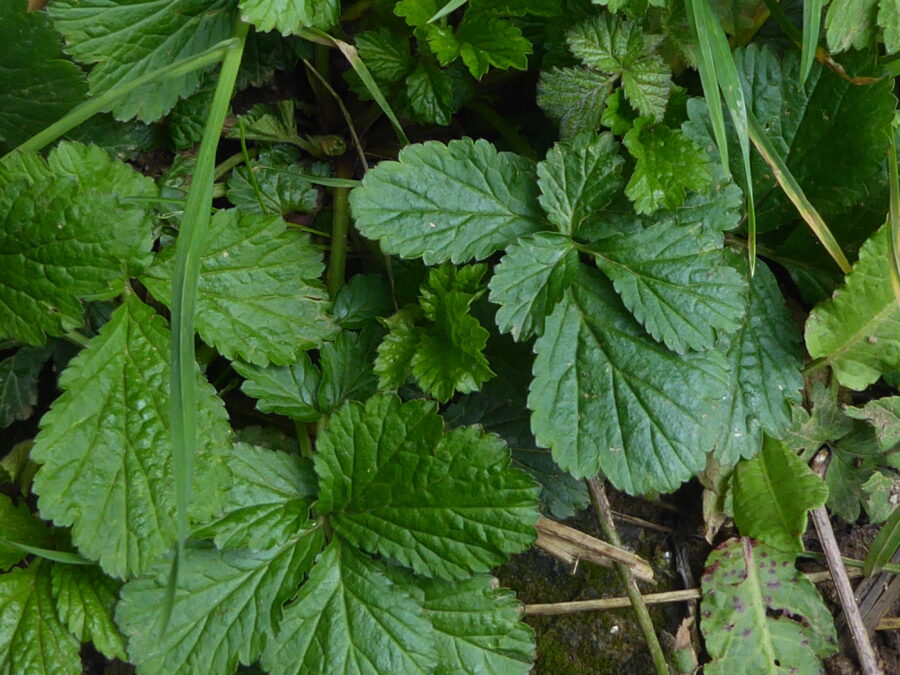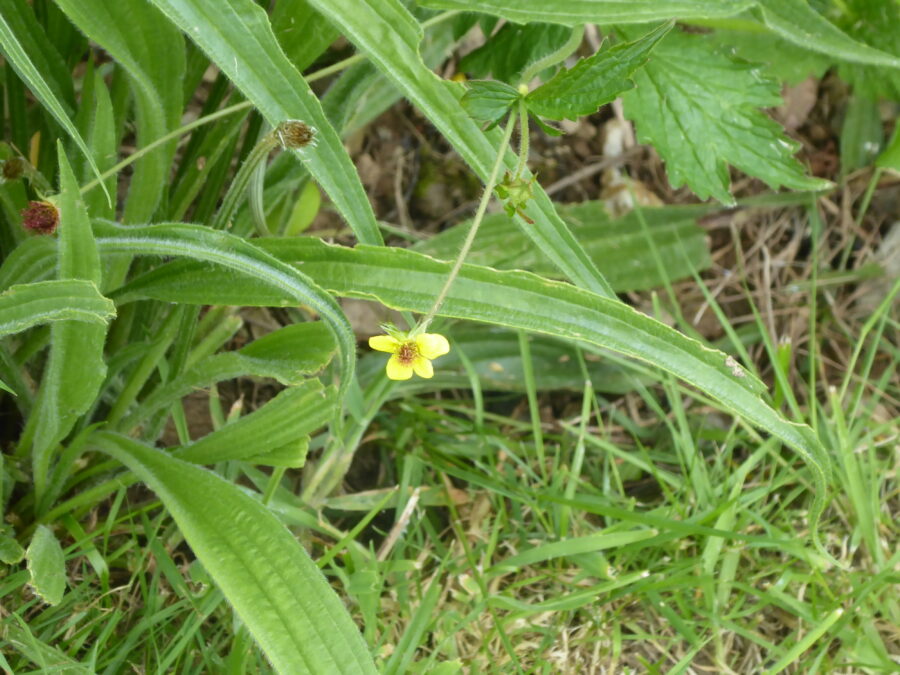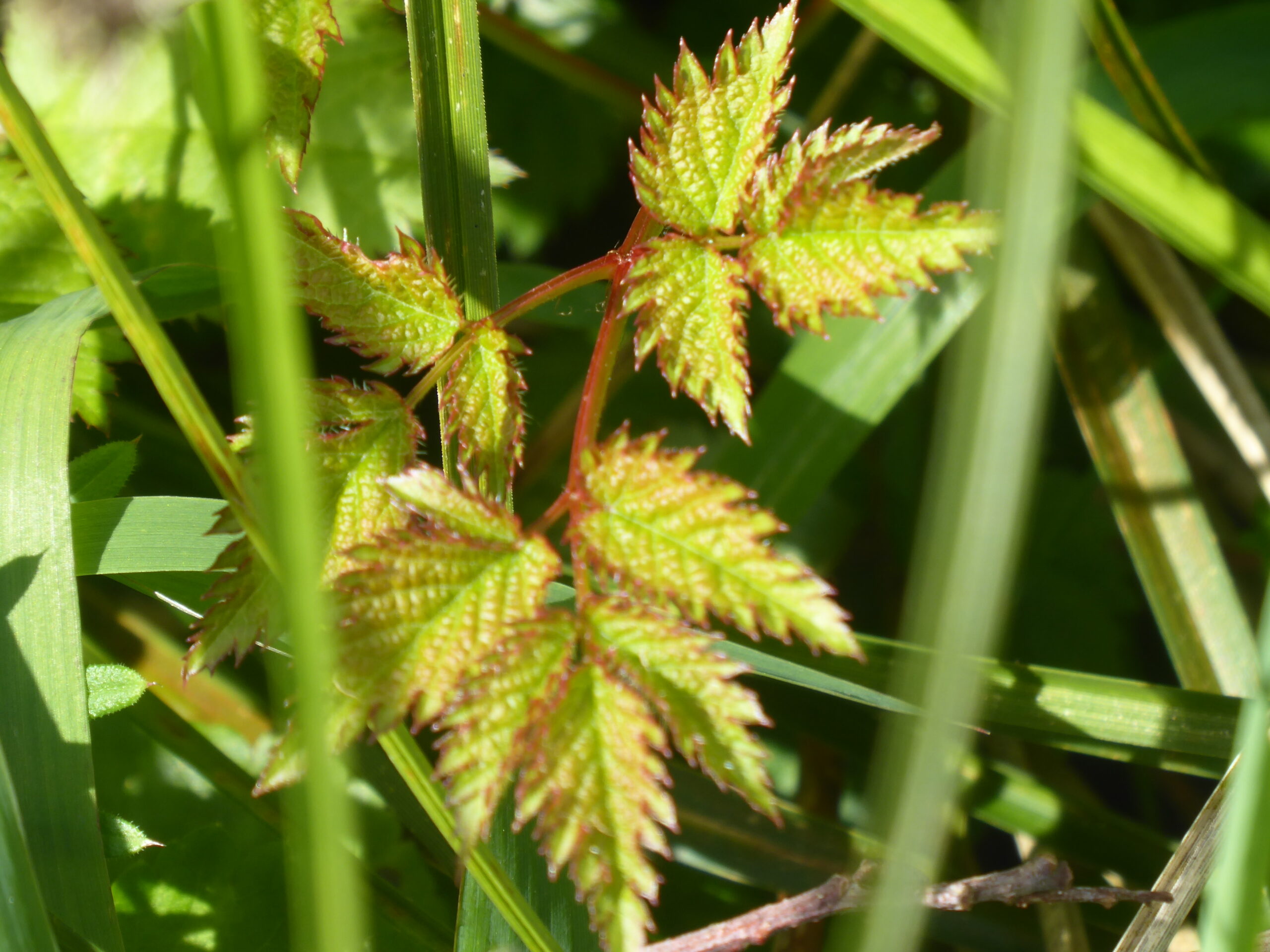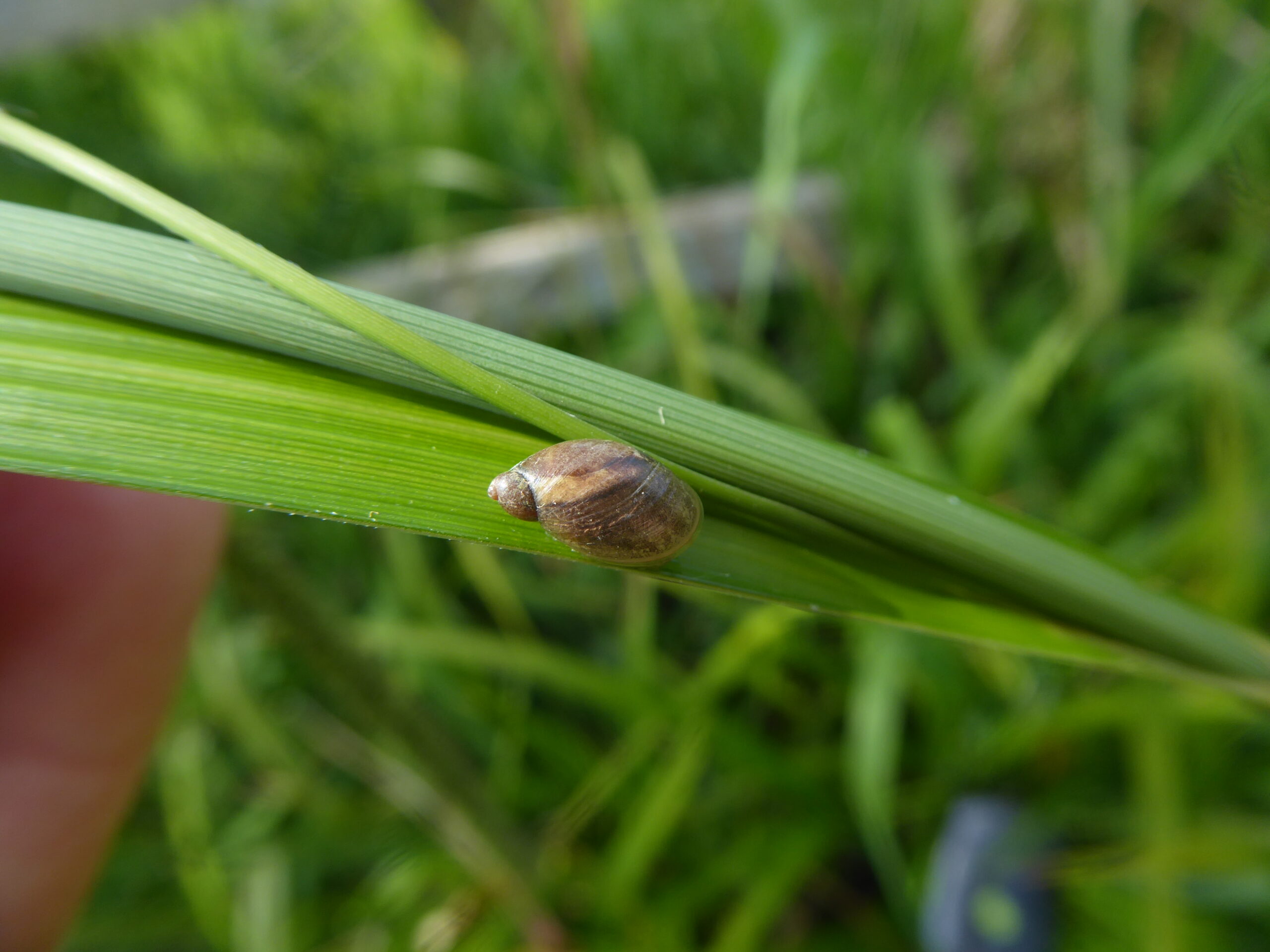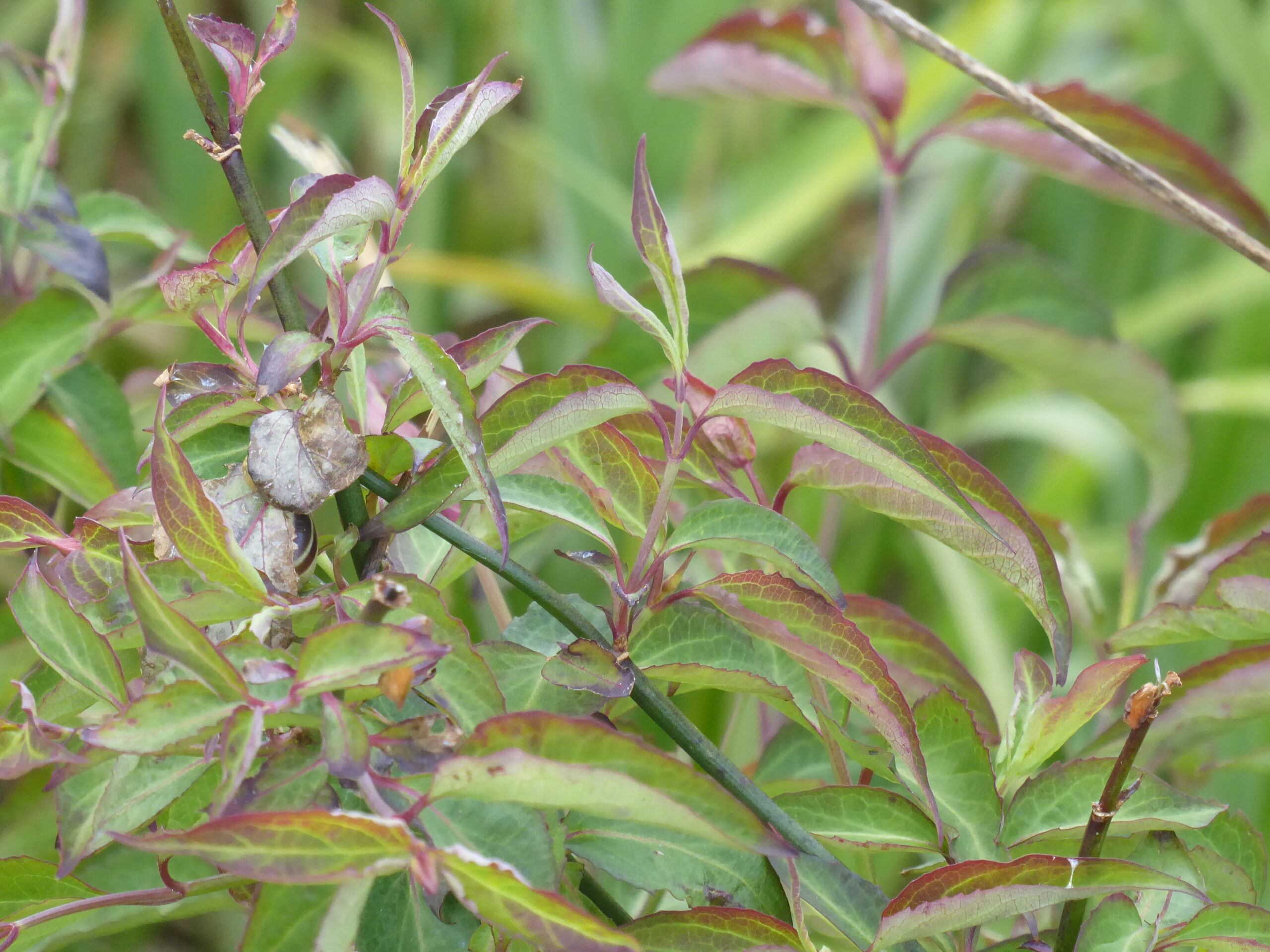On the decking with iced coffee, we were scanning the watermeadow, just watching and waiting. A large insect had scooted across landing briefly in Vole County and I had a photo of two pairs of wings bisected by a straw-coloured stalk. By the time I had rushed round to get a glimpse of its front, it had flown.
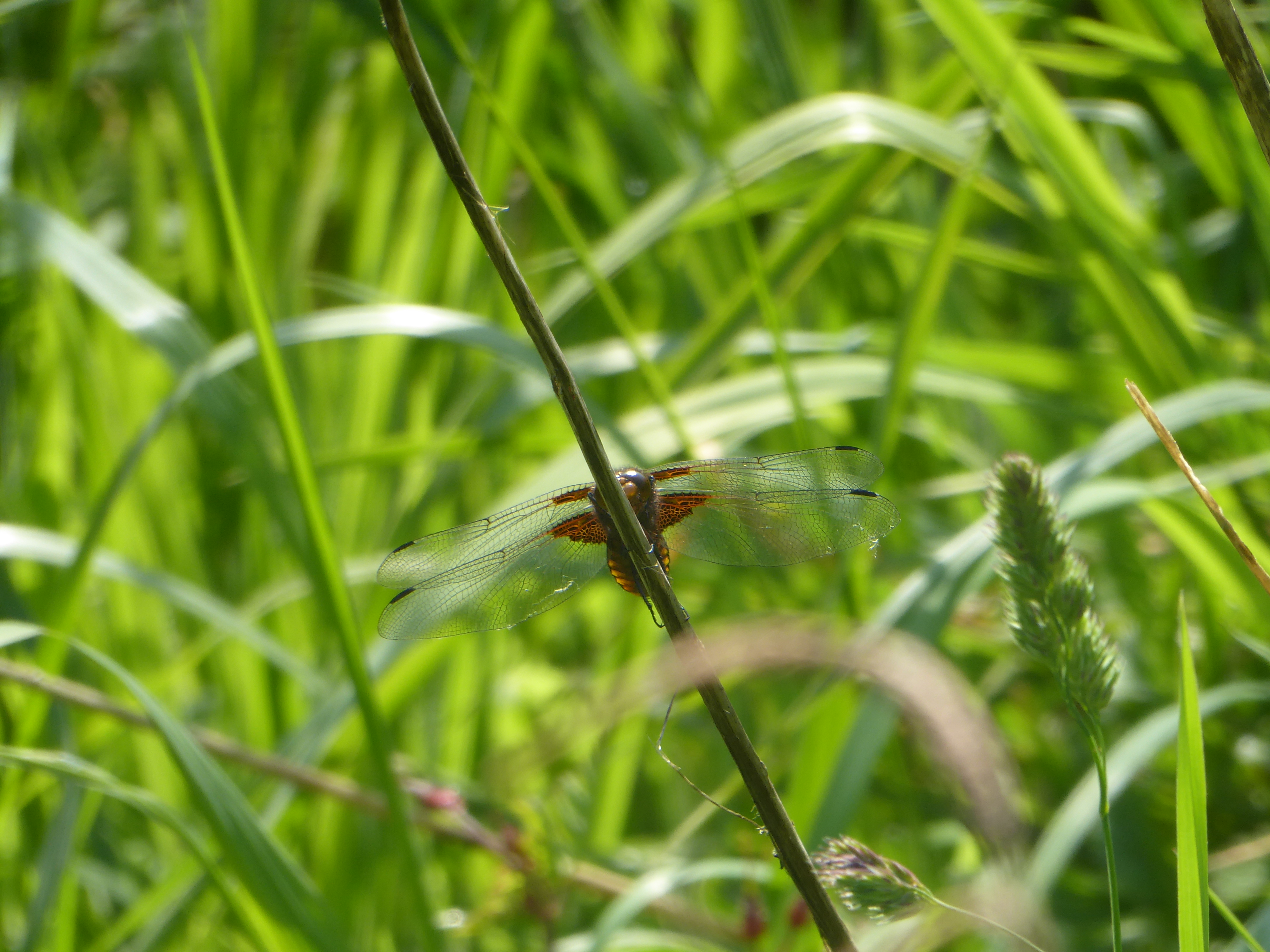
At first glance, it had looked like a giant wasp with dragonfly wings, and we really wanted to see it again. We had downed our iced coffee and talked garden plans – one of our favourite subjects – when the dragonfly returned. This time I was lucky! And it turned out to be an easy one to ID. This is a broad bodied chaser. It is either a female or a juvenile male. The male is pale blue with yellow spots, and I really want to see one!! They like places with still water, like ponds, and prefer not too dense foliage. The larvae live in the mud at the bottom. They are known to return to favourite low perches, as this one did.

